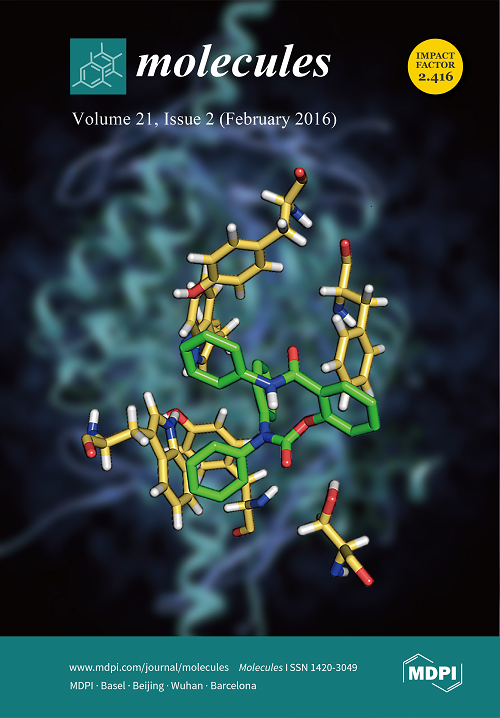The aim of the present study was to establish a new method based on Similarity Analysis (SA), Cluster Analysis (CA) and Principal Component Analysis (PCA) to determine the quality of different samples of
Poria cocos (Schw.) Wolf obtained from Yunnan, Hubei, Guizhou, Fujian,
[...] Read more.
The aim of the present study was to establish a new method based on Similarity Analysis (SA), Cluster Analysis (CA) and Principal Component Analysis (PCA) to determine the quality of different samples of
Poria cocos (Schw.) Wolf obtained from Yunnan, Hubei, Guizhou, Fujian, Henan, Guangxi, Anhui and Sichuan in China. For this purpose 15 samples from the different habitats were analyzed by HPLC-PAD and HPLC-MS
n. Twenty-three compounds were detected by HPLC-MS
n, of which twenty compounds were tentatively identified by comparing their retention times and mass spectrometry data with that of reference compounds and reviewing the literature. The characteristic fragmentations were summarized. 3-
epi-Dehydrotumulosic acid (F13), 3-oxo-16α,25-dihydroxylanosta-7,9(11),24(31)-trien-21-oic acid (F4), 3-oxo-6,16α-dihydroxylanosta-7,9(11),24(31)-trien-21-oic acid (F7) and dehydropachymic acid (F15) were deemed to be suitable marker compounds to distinguish between samples of different quality according to CA and PCA. This study provides helpful chemical information for further anti-tumor activity and active mechanism research on
P. cocos. The results proved that fingerprint combined with a chemometric approach is a simple, rapid and effective method for the quality discrimination of
P.
cocos.
Full article






